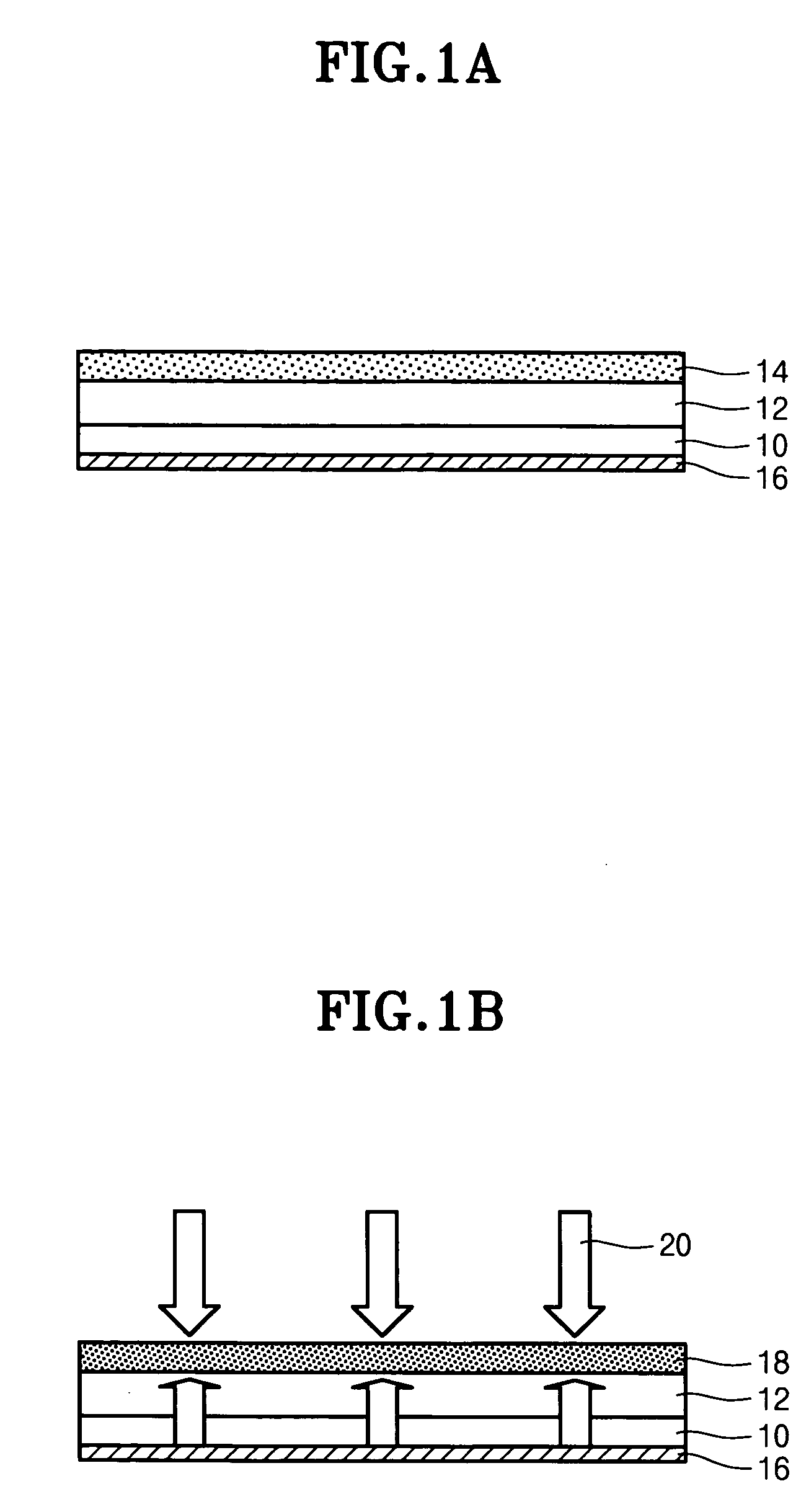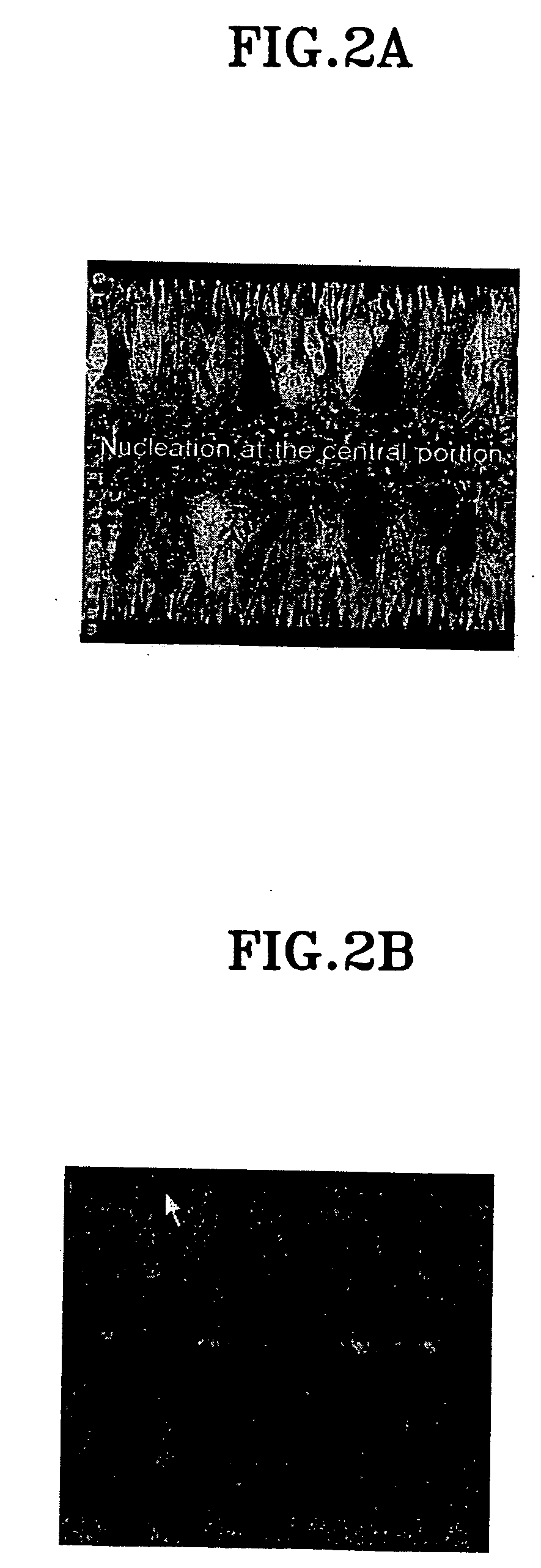Method for forming polycrystalline silicon film
- Summary
- Abstract
- Description
- Claims
- Application Information
AI Technical Summary
Benefits of technology
Problems solved by technology
Method used
Image
Examples
Embodiment Construction
[0026] Hereinafter, a preferred embodiment of the present invention will be described in detail with reference to the accompanying drawings.
[0027] A technical principle of the present invention will first be described. In conducting a low-temperature crystallization process by excimer laser irradiation, a metal film having high reflectivity is formed on the lower surface of an a-Si film. Thus, in the step of irradiating the a-Si film with laser light, the laser light absorbed into the a-Si film is partially transmitted through the a-Si film, and reflected from the metal film, and then absorbed into the Si film again. Thus, an effect equal to two-step laser irradiation is obtained by one-step laser irradiation, so that the size of grains in a poly-Si film is increased.
[0028] The present invention will now be described in detail with reference to FIGS. 1A and 1B, which are cross-sectional views illustrating a method for forming a poly-Si film according to the present invention. The ...
PUM
 Login to View More
Login to View More Abstract
Description
Claims
Application Information
 Login to View More
Login to View More - R&D
- Intellectual Property
- Life Sciences
- Materials
- Tech Scout
- Unparalleled Data Quality
- Higher Quality Content
- 60% Fewer Hallucinations
Browse by: Latest US Patents, China's latest patents, Technical Efficacy Thesaurus, Application Domain, Technology Topic, Popular Technical Reports.
© 2025 PatSnap. All rights reserved.Legal|Privacy policy|Modern Slavery Act Transparency Statement|Sitemap|About US| Contact US: help@patsnap.com



